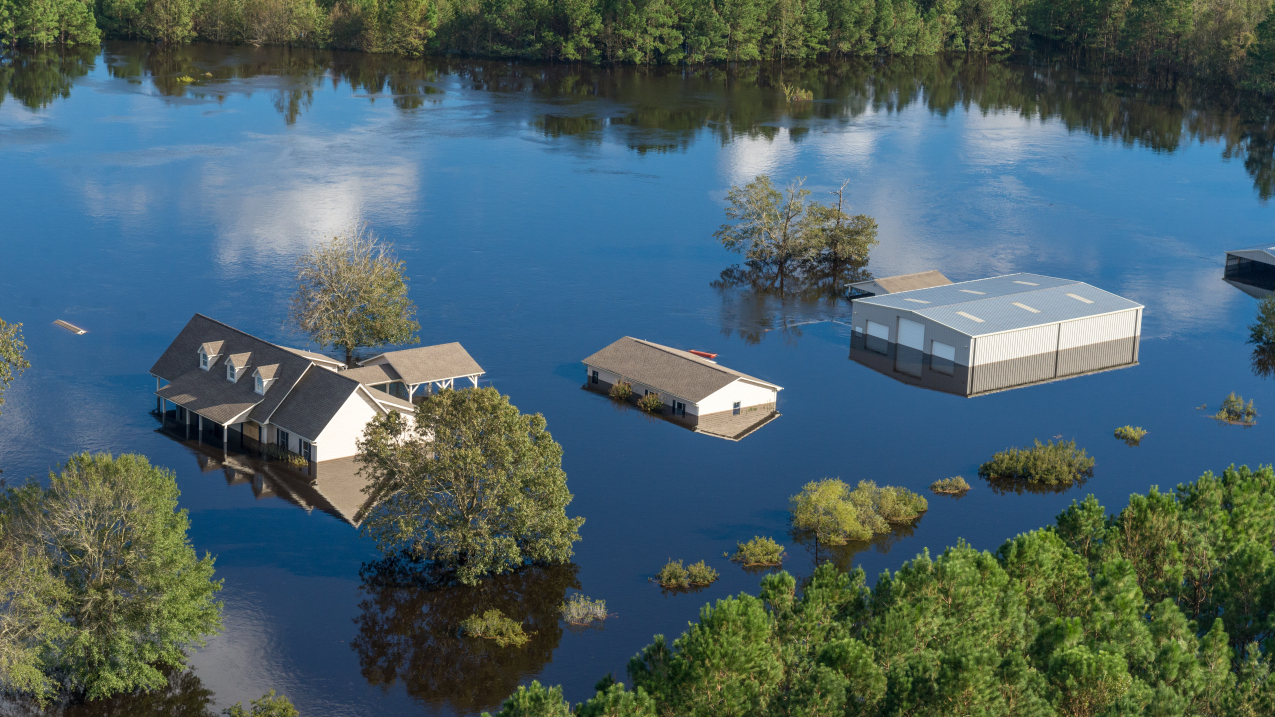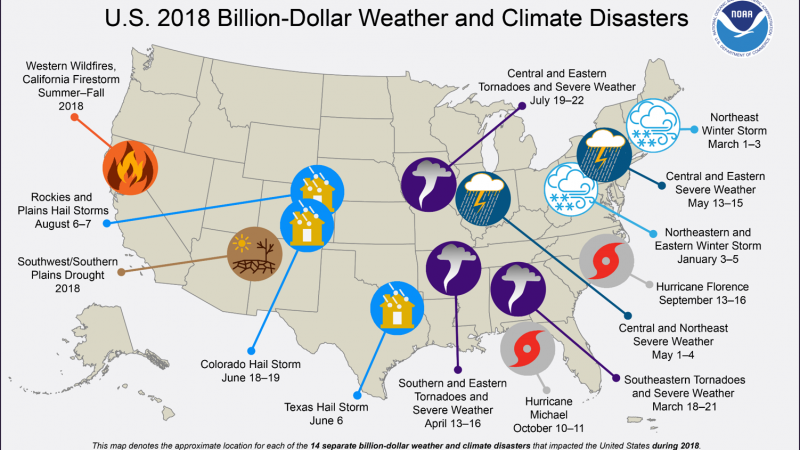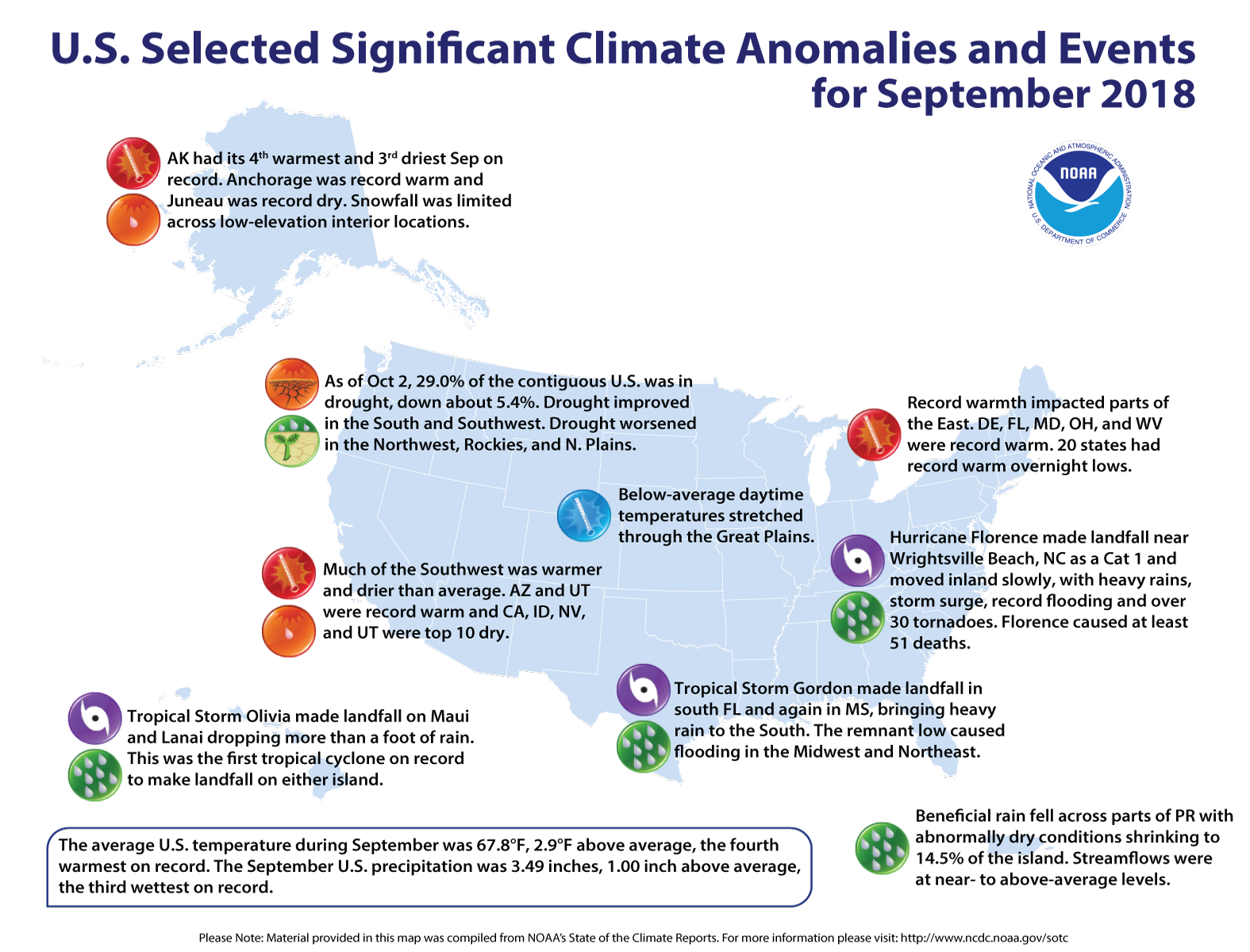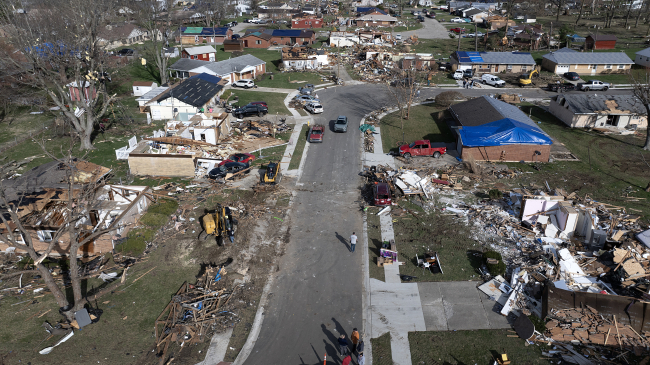Nation hit with 11 billion-dollar disasters this year, so far

Bladen County, NC., September 18, 2018 -- An aerial photo of a house and nearby buildings in a wooded area heavily flooded from Hurricane Florence. (Photo posted on fema.gov.) (Image credit: Liz Roll/FEMA)
Heat and lots of rainfall, thanks in part to Hurricane Florence, were the key factors in last month’s ranking as fourth hottest and third wettest September on record for the contiguous United States.
By September’s end, the U.S. had experienced 11 billion-dollar weather disasters that included two winter storms, Western wildfires, drought, a hail storm, a spate of tornadoes and Florence.

Let’s take a closer look at the highlights from NOAA’s latest U.S. climate report:
Climate by the numbers
September 2018
The average September temperature across the contiguous U.S. was 67.8 degrees F (2.9 degrees above average), making it the fourth hottest September in the 124-year record, according to NOAA’s National Centers for Environmental Information (NCEI). States across the Southwest, and spanning the Mississippi River to the East Coast, saw above-average temperatures. Some areas of the Northwest and Great Plains had near- to below-average temperatures.
The average precipitation for September was 3.49 inches (1 inch above average), making it the third wettest September on record. Slow-moving Hurricane Florence dropped torrential rainfall that triggered record flooding in eastern parts of the Carolinas. Parts of the Southern Plains and Midwest also saw record-setting rainfall, while the West was mostly dry.
The year to date | January through September
The average U.S. temperature for the year to date (January through September) was 57 degrees (2 degrees above average) – making it the eighth warmest such period on record. And with a national precipitation total of 25.2 inches (2 inches above normal), it was the 13th wettest YTD on record.

More stats of note
-
Florence's grim aftermath: The hurricane’s prolonged storm surge and historic flooding was responsible for at least 51 deaths. The single highest rain total from Florence of 35.93 inches was recorded in Elizabethtown, N.C.
-
Hurricane Olivia soaked Hawaii: Olivia – the first tropical cyclone to make landfall on the Hawaiian islands of either Maui or Lanai – brought more than 12 inches of rain and destructive flooding.
-
Drought improved: September ended with 29 percent of the contiguous U.S. in drought, down from 34.4 percent measured at the end of August.
More > Access NOAA’s climate reports and download images from the NCEI website.
Media contact
John Leslie, 301-713-0214



